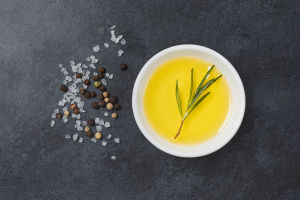Essential oil massage is a holistic therapy combining touch and aromatic plant oils to promote relaxation, relieve muscle tension, and improve overall well-being.
By using the right techniques, a massage can soothe the body, relieve aches, or energize the mind.
Here’s a guide to basic essential oil massage techniques to help you get started.
1. Choosing the Right Essential Oils
Choosing the right oils is crucial to achieving the desired massage effect. Each oil has different properties:
Lavender: Calming and great for stress relief and relaxation.
Peppermint: Cooling and invigorating; excellent for sore muscles.
Eucalyptus: Refreshing and stimulating, often used for respiratory benefits.
Rose: Soothing and rejuvenating; ideal for emotional relaxation.
Always dilute essential oils with a carrier oil like coconut, jojoba, or almond oil before applying to the skin to prevent irritation.
2. Effleurage – Light, Long Strokes
Effleurage is a gentle technique involving light, gliding strokes along the muscles. It’s often used to start and end a massage to warm up muscles and spread oil. To perform effleurage:
Warm diluted essential oil in your hands.
Use your palms to apply smooth, long strokes, moving toward the heart to aid circulation.
Effleurage uses light to medium pressure to ease tension and prepare muscles for deeper massage techniques.
3. Petrissage – Kneading Movements
Petrissage involves kneading, squeezing, and lifting the muscles to release deeper tension and improve circulation. It’s used on larger muscles like shoulders, back, and thighs. Here's how to do petrissage:
Grip the muscle between your thumbs and fingers.
Lift and knead the muscle in a rhythmic motion, like kneading dough.
Apply moderate pressure and focus on knots or tense areas. Petrissage helps relieve soreness but should be gentle enough to avoid discomfort.
4. Friction – Deep, Circular Movements
Friction targets specific tight spots, knots, or areas of tension. It involves deeper, circular movements using the fingertips, knuckles, or thumbs. To perform friction:
Apply pressure with your fingers or thumbs directly to the tight area.
Make small, circular motions to break down knots or adhesions.
Friction works well on overworked muscles but should be applied with care to avoid pain or bruising.
5. Tapotement – Tapping and Percussive Strokes
Tapotement is a rhythmic tapping or percussive technique that stimulates the muscles and improves circulation. It's usually done with the sides of the hands, cupped palms, or fingers. To practice tapotement:
Use the sides or palms of your hands to tap or strike the muscles lightly.
Maintain a quick, rhythmic motion, keeping your wrists relaxed.
Avoid bony areas and use this technique to energize muscles. It’s particularly effective in sports massage for invigorating tired muscles.
6. Vibration – Shaking or Trembling Movements
Vibration involves gentle shaking or trembling movements to release tension and relax deeper muscles. It’s usually applied to larger muscle groups like the thighs or back. To use vibration:
Place your hand on the muscle.
Apply gentle pressure while moving rapidly back-and-forth or side-to-side.
Vibration can both relax and stimulate muscles, depending on the intensity. It’s useful for calming muscles or revitalizing tired areas.
The basic techniques of essential oil massage—effleurage, petrissage, friction, tapotement, and vibration—are effective for relaxation, tension relief, and overall wellness.
Understanding these techniques and using the right essential oils can help tailor a massage to specific needs, whether for soothing relaxation or energizing stimulation.
With practice and attention to the receiver's comfort, essential oil massage becomes a therapeutic practice for both body and mind.


